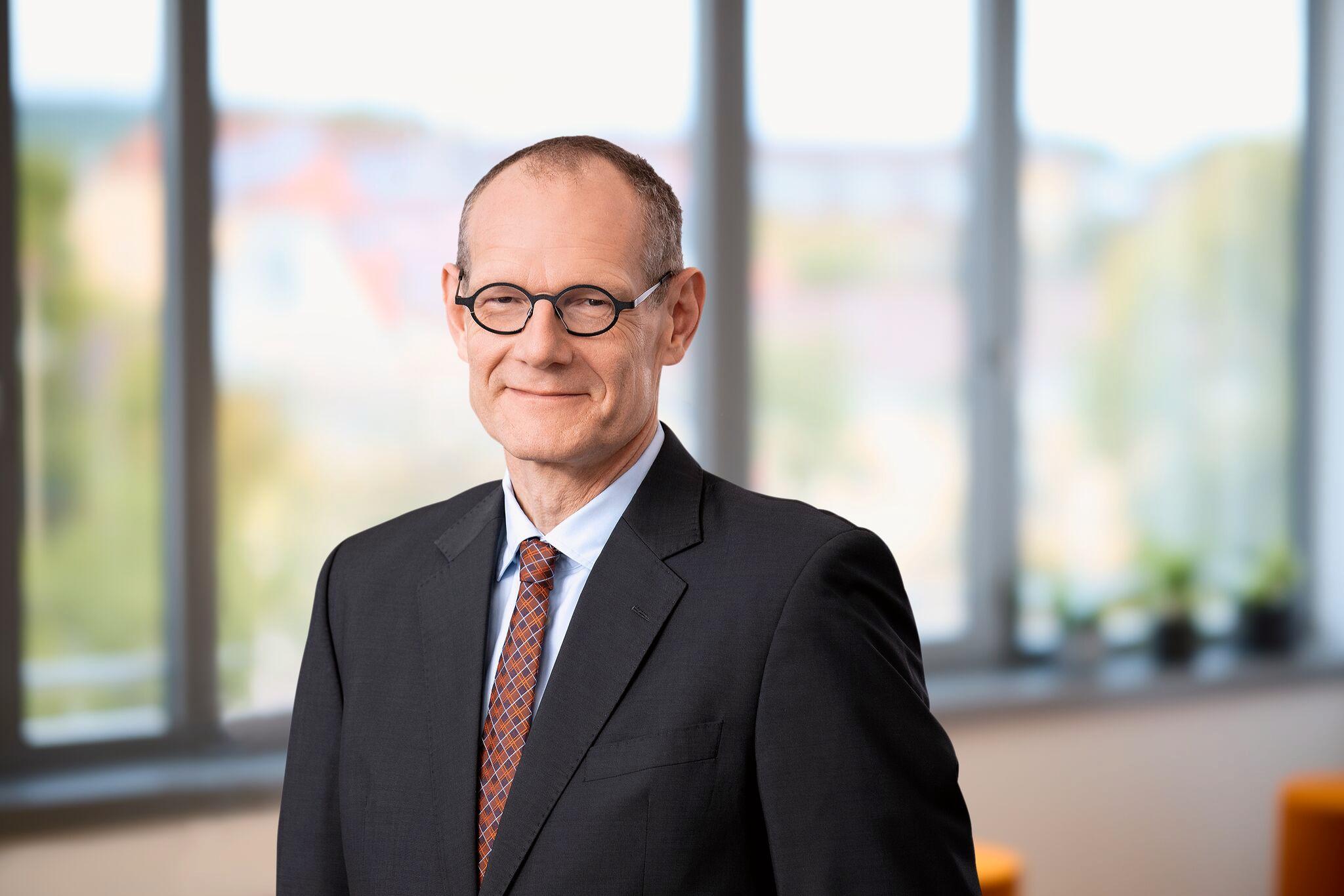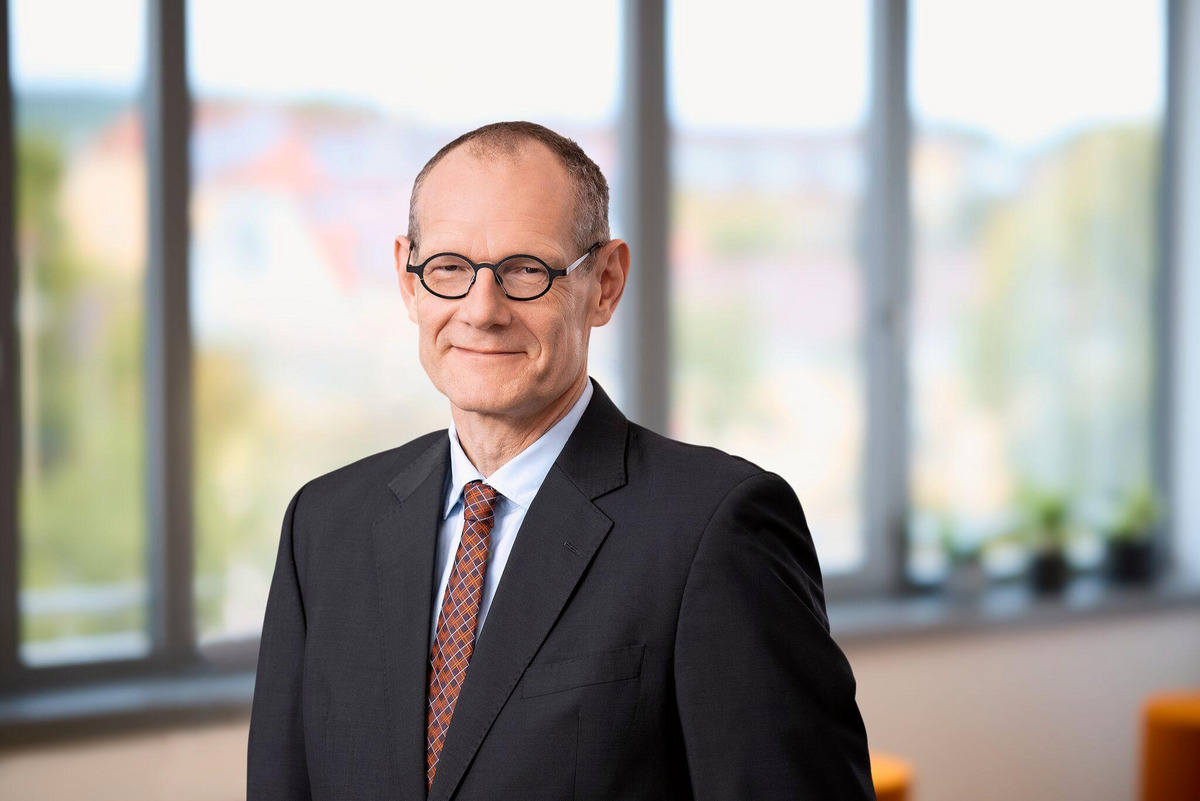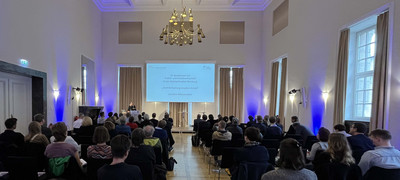"In the sector, it takes staying power on the path to innovation"
Innovation pioneer from the Nuremberg Metropolitan Region: Bernd Montag, CEO of the listed medical technology manufacturer Siemens Healthineers, headquartered in Erlangen (sales in 2022 around 21.7 billion euros), talks about challenges, new technologies and loyalty to the location.
Interview: Daniel Naschberger, Garber Advertising
Mr Montag, Siemens Healthineers AG currently employs around 70,000 people worldwide and is the global innovation leader in its field. What makes the medical technology industry special?
You have to understand medicine, technology and the client's business - the needs in the different healthcare services worldwide are manifold. The exciting thing: We are engineers and physicists, developing for medical professionals who judge whether what we do is good. The dialogue between feasibility and desire is important. That's why we have built a global network, with over 2500 collaboration partners, in the USA, China, Europe - and at the local level. We cooperate closely with the 'Universitätsklinikum Erlangen', the research institutes of the FAU Erlangen-Nuremberg, the Fraunhofer Institute and many start-ups of the platform that has established itself in the metropolitan region under the name Medical Valley.
You are talking about the health services?
The plural is important because it refers to the different countries, each of which has its own logic. Medical technology is global: a computer tomograph is a computer tomograph, whether in Japan or in the USA. But healthcare is local, whether it is completely state-run or private or a mixture of both. The differences are extreme. The world spends eleven percent of GDP on health. Sounds a lot, but what is more important than health?! It's an essential part of the world's economic output. And we as a company play a significant role in this.
What are the special challenges currently facing the health sector?
In the past, improved hygiene led to a sharp increase in life expectancy, and infectious diseases were brought under control with vaccinations, for example. Now, however, chronic, non-communicable diseases are on the rise worldwide, for example cancer or cardiovascular diseases. Now is the first real period of medicine, in which the focus is on the individual patient. And another challenge that exists everywhere is the shortage of skilled workers.
What does the situation with the shortage of skilled workers really look like at the moment?
Mankind is getting older and older, but there are fewer and fewer young people to take care of the elderly. The shortage of medical professionals is enormous; according to WHO estimates, there will be a shortage of around 10 million health professionals by 2030. The answer to solving this huge problem: Technology, digitalisation, artificial intelligence.
The purpose statement of Siemens Healthineers is "We pioneer breakthroughs in healthcare. For everyone. Everywhere." What is behind this?
A clear commitment to innovation. And that medicine should be accessible to people everywhere. Fifty percent of the world's eight billion people have no access to adequate medical care, including the "developed" world. For us, it is not about providing some kind of brilliant performance for a few, but how we, as a company from the Nuremberg Metropolitan Region, can actively shape the change in the health care system. Our approach here too: Technology. Specifically, patient twinning, precision therapy, data and AI.
Please explain.
In the vision of Patient Twinning, we create a kind of digital copy of the patient. This can be used, for example, to virtually simulate an intervention and determine the chances of success. In this way, unnecessary interventions are avoided and only those interventions are carried out that are promising and really help the patient. This is more or less the logical consequence of our general goal of tailoring treatments to individual patients and finding the best possible therapy, ideally minimally invasive, for each and every one of them.
And what do you mean by data?
It is about using digital, data-driven applications and AI to improve healthcare provider processes with technology-based services. For example, you can visualise patient data in a three-dimensional, photorealistic view. We are also using technical developments that are taking place in other industries, for example in the film sector. The result is a completely new level of detail in all anatomical areas, better data also means better diagnostics or planning of operations.
How quickly do such innovations progress in your company?
Our photon-counting CT scanner, for example, offers doctors a razor-sharp image and additional information that significantly improves diagnosis and therapy. We have been investing in this technology since 2003, with the first commercial launch in 2021. In the sector, it takes staying power on the path to innovation.
Research and development must therefore have a correspondingly high priority.
We spend around 1.8 billion euros on this. And that pays off. More than 70 per cent of critical clinical decisions are based on technologies that we have in our portfolio. We have over 23,000 technical property rights, 15,000 of which are granted patents. 42 per cent of our turnover is based on innovations from product launches in the last three years.
Does the metropolitan region offer the right environment for a culture of innovation?
I decided to join a local company after graduating from FAU. Today, Siemens Healthineers AG is listed on the DAX. It stands for innovation from the metropolitan region. In our profession, the interaction between science, medicine, industry and politics is very important. And that is the case here. The metropolitan region has huge potential. As a location for medicine and medical technology, we are at the forefront worldwide. We are not the only global players, but there is also a large, broad-based middle class.
What is your commitment to the location?
We are currently building a new factory for 80 million euros in Forchheim in Upper Franconia to grow crystals for semiconductor production; we need the crystals for the photon-counting computer tomographs already mentioned. We are creating 100 new jobs with this. It is the second major investment in the Forchheim site within three years. Since 2019, we have invested a total of about 500 million euros in the expansion of the site.





